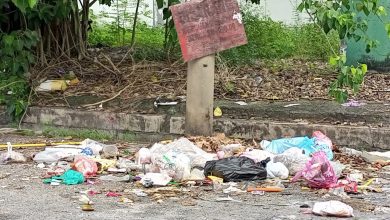Food for Thought
By Dr Chakr Nagara
Words such as ‘why’, ‘who’, ‘where’, ‘when’ and ‘how’ are small words. But they carry a big impact. Of these ‘why’ carries the most impact. We, all too often, fail to use this word, for we have been conditioned to accept what is given out by our elders, teachers, authorities as ‘gospel truth’ and above questioning.
When young, our parents often say ‘Because we tell you so’, thus stifling the young, naturally inquisitive mind.In school, our teachers teach by rote, rather than by reason. This unfortunately, is the failing of our educational model. As adults, we are being fed our daily dose of ‘pronouncements’ through the various manner of media, from printed to electronic.
This situation does the country no good. It discourages intellectual discourse. Of course it helps in control – people control. If we are not careful, we could well be heading toward rule by edict.
Therefore this 3-letter word ‘why’ is so very important. We must encourage everyone to use it. Get the young children to ask WHY; get the students in schools and universities to ask WHY often enough. If these two levels of youngsters start asking WHY, it will be natural for adults to ask the same question, as it will become a habit acquired from youth. We must engage those who tell us what to do and how to do whatever, in an intellectual discourse by questioning ‘WHY?’
The importance of this word lies at two levels.


Secondly, by asking ‘why’, we prevent people in position, from pulling the wool over our eyes. They must respond with logical and reasonable answers, or look foolish.
The mere question ‘why’ sets in motion a series of intellectual exchanges between the two parties involved. In the course of communication, further questions may arise, using other ‘small’ words, such as ‘how’, ‘where’, ‘when’, ‘who’, etc.
This will then evolve toward mutual understanding of each other’s position. From this, both parties can then analyse the subjects under discussion and often arrive at solutions. The use of the word ‘why’ should NOT be considered as an act of confrontation, but rather that of a quest for mutual understanding, and thus improving on the situation at hand.
Let us take a simple, common problem, we see day in, day out as an example – bad road manners, more specifically, dangerous behaviour at road junctions with traffic lights, and ask ‘WHY’.
‘WHY’ is it that every day, at every junction with traffic lights, we see suicidal behaviour amongst our normally sane road users? It is a ‘confrontational dance’ between two groups of road users – the ‘light jumpers’ and the ‘light runners’.
‘Light Jumpers’ are those amongst us (and there are more than we care to admit) who ‘jump’ the lights, by crossing the junction before the lights turn green.
‘Light Runners’ are those who run through the junction before the lights turn red by rushing and speeding toward the junction, often to miss the green light and thus crossing the junction when the lights turn amber or even red. These are suicidal road users, risking their lives and those of innocent road users.
Why do they have these horrible habits? Why are the traffic police powerless in apprehending them? Why are the CCTVs, supposedly installed at these junctions, not working?
Why are those caught ‘light running’ and have their pictures published in the papers, be ‘lucky’ to have their number plates blurred out? Why do we need an epidemic of deaths, and injuries, before the authorities wake up to do something?
What can be done?
For a start, can we NOT blur up the number plates of cars caught ‘running’ the lights when we publish these pictures in the papers. We also need to have a regular, daily section in the paper, on one full page if necessary. By having this ‘name and shame’ strategy (with number plates clearly shown), it is hoped that there will be less of these reckless road users. The authorities should also follow up on these photographs by implementing the law and persecuting these lawbreakers.
Perhaps we can incentivise citizens to participate in photographing them on camera phones and by rewarding them (with a portion of the fines collected from the law breakers upon conviction?). The police can assist by having a dedicated number for these photographs to be electronically posted for further action.
Even the ‘Mat Rempits’ and their poorer cousins ‘Mat Basikals’ can be put to community duty instead of roaming aimlessly around. Another practical suggestion is to have road bumps before the approach to these road junctions, as this would force the ‘light runners’ to slow down.
There are many other issues that are of interest to the public and we need to ask simple questions, such as ‘WHY’. It is hoped that this article will stimulate more comments from the public on other pressing issues, and the public to start asking ‘why’.
Dr Chakr Nagara can be contacted at chakrsri@gmail.com


